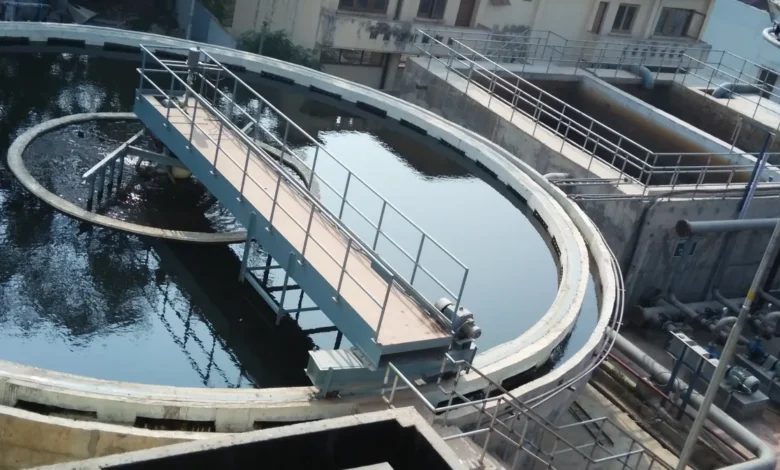
Many organizations prioritize industrial effluent water treatment because improper disposal can harm the environment and human health. To address this issue industries are introducing innovative solutions to enable appropriate wastewater treatment.
A biological treatment system, which uses microorganisms to break down natural contaminants in wastewater is a popular method. These structures are well known for their efficiency and low cost, and they may suit the specific needs of a wide range of industries.
We shall look at a few of the only methods and devices for industrial effluent water treatment. In addition to those strategies, we can highlight the importance of long-term techniques such as water recycling and zero-liquid discharge in building effective corporate wastewater treatment solutions.
Using these techniques, industries can reduce their environmental effect.
The adoption of superior industrial effluent water treatment is another important equipment for effluent water treatment. These buildings use physical, chemical, and biological methods to remove diseases, contaminants, and large particles from wastewater.
Which industries use effluent treatment, and why?
Because of the nature of the sports in these industries and the potential environmental impact of wastewater, many industries employ industrial effluent water treatment.
Several industries use wastewater treatment solutions including:
-
Pharmaceutical Industry:
The pharmaceutical industry generates effluent water, which may contain hazardous chemicals and active medicinal molecules. It is critical to clean this effluent to reduce the risk of environmental damage and medicinal medication resistance while also preventing infection of water resources.
-
Petroleum Industry:
Petroleum industry effluent contains heavy metals, hydrocarbons, and other contaminants. Wastewater must be managed to reduce its impact on ecosystems and aquatic bodies.
-
Chemical Industry:
Chemical industry effluent water may contain impurities such as heavy metals, organic compounds, and hazardous chemicals. These materials must be removed or balanced via wastewater treatment before being released.
-
Food Industry:
The food and beverage industry generates both nutrient-rich and potentially harmful effluent water throughout the manufacturing process.
-
Textile Industry:
Textile and leather production involves chemicals, dyes, and solvents, leading to high pollution levels in commercial wastewater treatment facilities. Furthermore, adequate treatment is required to eliminate such impurities and prevent water illness.
-
Mining:
Mining effluent contains high levels of heavy metals, acids, and other pollutants. Mining wastewater must be treated to prevent contamination of water supplies and to limit the environmental impact on neighbouring ecosystems.
Different Methods Of Industrial Effluent Water Treatment
There are numerous techniques for treating industrial effluent water. Each technique will deal with precise styles of pollutants and meet required water necessities.
-
Physical Treatment:
Screening: The effluent going through screens to cast off massive particles like pebbles, plastics, and different strong substances
Sedimentation: Solids in the industrial wastewater treatment systems settle to the bottom & produce sludge removed whilst it’s far allowed to settle.
Filtration: To do away with suspended solids, natural particles, and other contaminants, a variety of filtration strategies, including sand, activated carbon, and membrane filtration, are employed.
-
Chemical Treatment:
Coagulation and Flocculation: Also, to take away suspended particles, chemical coagulants paint with effluent, which includes ferric chloride or alum. Following that, it adds flocculants to the debris to aid in their clustering and facilitate their clean removal via sedimentation or filtration.
PH Adjustment: Chemicals go to the effluent to elevate its pH to a preferred variety. It can even help particular contaminants precipitate effortlessly & improve the efficiency of the next remedy approaches.
Oxidation and Reduction: Chemical oxidants which include chlorine or ozone can degrade and contaminate natural materials. Hence, for changing some pollutants into less risky bureaucracy, reduction approaches like chemical or electrochemical discounts are also precious.
-
Biological Treatment:
Activated Sludge Process: It mixes the wastewater with an aerated microbe lifestyle in an aerated tank. Also, after ingesting contaminants and organic debris, the microorganism produces biomass, carbon dioxide, and water.
Trickling Filters: A biofilm of microorganisms bureaucracy on a mattress of porous media that receives wastewater. Moreover, as the wastewater flows through the filter out, the microorganisms in the biofilm damage down organic materials.
Constructed Wetlands: In well-designed wetland structures, natural techniques inclusive of microbial pastime and plant absorption improve water greatly and do away with pollution.
-
Improved Treatment:
Membrane Processes: Techniques like opposite osmosis (RO) and ultrafiltration (UF) appoint semi-permeable membranes. It will extract dissolved solids, salts, and other impurities at the molecular level.
Ion Exchange: Resins trade ions within the effluent to cast off particular contaminants, which include dissolved salts or heavy metals.
Advanced Oxidation Processes (AOPs): AOPs use robust oxidants, along with hydrogen peroxide blended with ultraviolet (UV) mild or ozone, to interrupt down persistent natural pollutants and dispose of chemicals resistant to standard remedy strategies.
-
Disinfection:
Disinfection is useful to put off or make pathogens within the effluent inactive after the number one treatment. Standard disinfection methods include UV disinfection, chlorination, & the use of substitute disinfectants which include ozone or chlorine dioxide.
Conclusion: Industrial Effluent Water Treatment System For Water Recycling
In summary, the installation of an industrial effluent water treatment system is a critical first step towards water recycling and lengthy-term, sustainable organization water management. Businesses can reduce their environmental effect, shop water, and meet policies by treating and recycling the wastewater left over from their operations.
Improving company social duty and sustainable practices: Putting a wastewater treatment solution shows a determination to these ideas. It can enhance a business’s status with stakeholders, customers, and the community by demonstrating its commitment to environmental stewardship.
The following are a few essential instructions learned:
-
Cost Savings:
The management of water and wastewater can be very pricey for groups. Businesses can reduce operational fees associated with water procurement and disposal and reduce their dependency on freshwater assets by recycling and reusing dealt with water.
-
Water conservation:
The international is worried approximately water shortage, and firms use lots of water. Reducing the dependency on freshwater assets is possible through the effective reuse of handled water via the implementation of an effluent remedy machine.
-
Tailored Solutions:
Systems for treating commercial effluent water can be made to especially deal with the necessities of various industries and the peculiarities of their wastewater. Treatment methods include filtration, chemical treatment, biological treatment, and present-day technology like opposite osmosis may be used, depending on the contaminant’s gift.
-
Environmental Maintenance:
By stopping the discharge of dangerous pollution and toxins into natural water bodies, commercial effluent water remedy systems contribute to the preservation of aquatic ecosystems and the protection of public health. Businesses can considerably lessen their ecological footprint by processing wastewater on-website online.
The WOG Group’s wastewater treatment plant is presently updated and geared up with reduced part equipment. Our efforts in bioremediation have allowed us to be diagnosed as pioneers in the field and enable us to continuously provide our customers with progressive items and offerings. Our wastewater treatment process produces high-quality water with minimal energy and chemicals.



